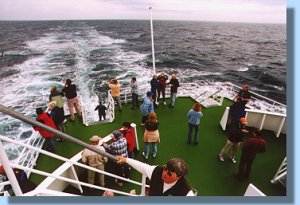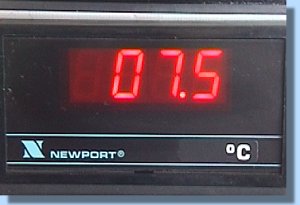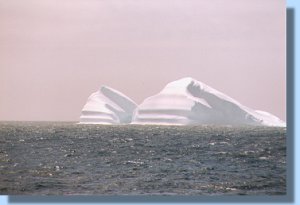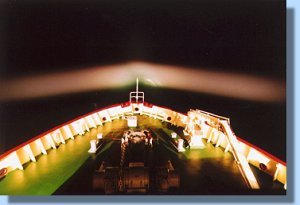
Today's our second day on the Scotia Sea. Our progress is good and we expect to arrive at South Georgia somewhere around noon tomorrow. We also expect to pass the Antarctic Convergence somewhere today. The upwelling of cold nutrient rich waters from the south marks the Convergence. Because of the nutrients, phytoplankton and krill thrive here sustaining the great diversity of wildlife higher up the food chain. The Antarctic Convergence is considered as the border separating Antarctica from the rest of the world.

The Convergence doesn't have an exact location. It can shift over several hundreds of kilometers and there's no visible sign of its presence. Instead we have to rely on measurements of the water temperature dropping several degrees from one side of the Convergence to the other. At 7.30 AM the temperature reads 9.4 ºC. An hour later it's already 7.5 ºC. During Doug's lecture the temperature further drops to 5.9 ºC and after Jim Danzebaker's lecture it has gone down another 0.4 ºC. Then it stops settling at 5.5 ºC, normally too high for the south side of the Convergence.

Safe for a short shower the weather remains great. It's tempting to stay outside instead of attending the lecture of Art Ford on the different forms of ice ("consider ice as a rock"). At 11 AM we see our first iceberg (52º 44' S, 46º 47' W), a tabular that's probably grounded on the Scotia Ridge far below us. In the afternoon we see a few more icebergs. In the sun the temperature is an agreeable 19 ºC. Maybe this is the reason behind the water temperature going slightly up again instead of dropping further. Currently it's 6.1 ºC.

There's a short moment of excitement when four fin whales are passing our ship but the rest of the afternoon is rather uneventful. After Rod Planck's evening lecture on how to correctly expose when making pictures we go to the bridge. On the radar screen we see two large icebergs in front of our ship. Powerful light beams radiate forward in the darkness to watch for smaller chunks of ice, so called growlers. After a last measurement of the temperature (4.9 ºC) we go to bed wondering whether we did pass the Convergence or not.